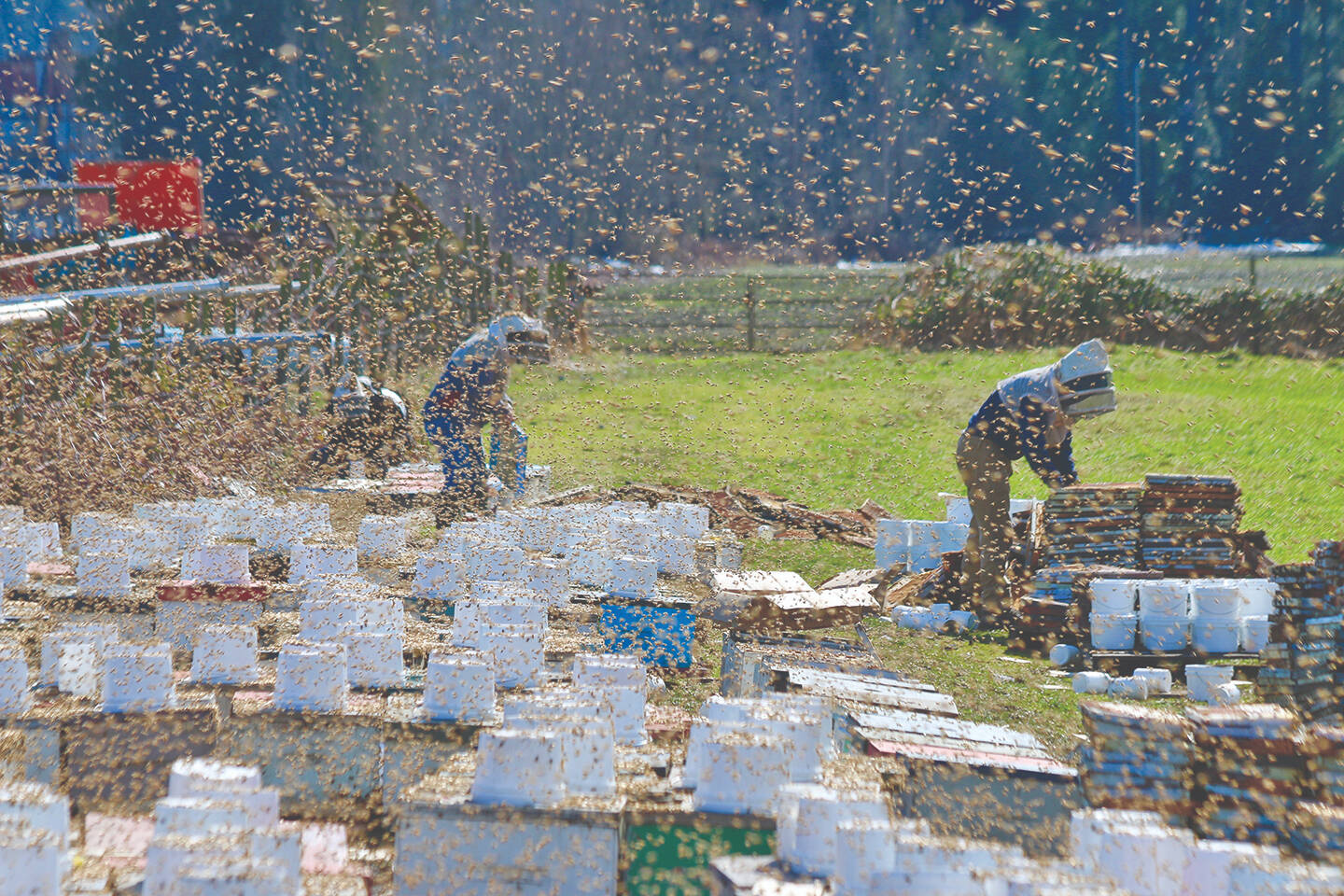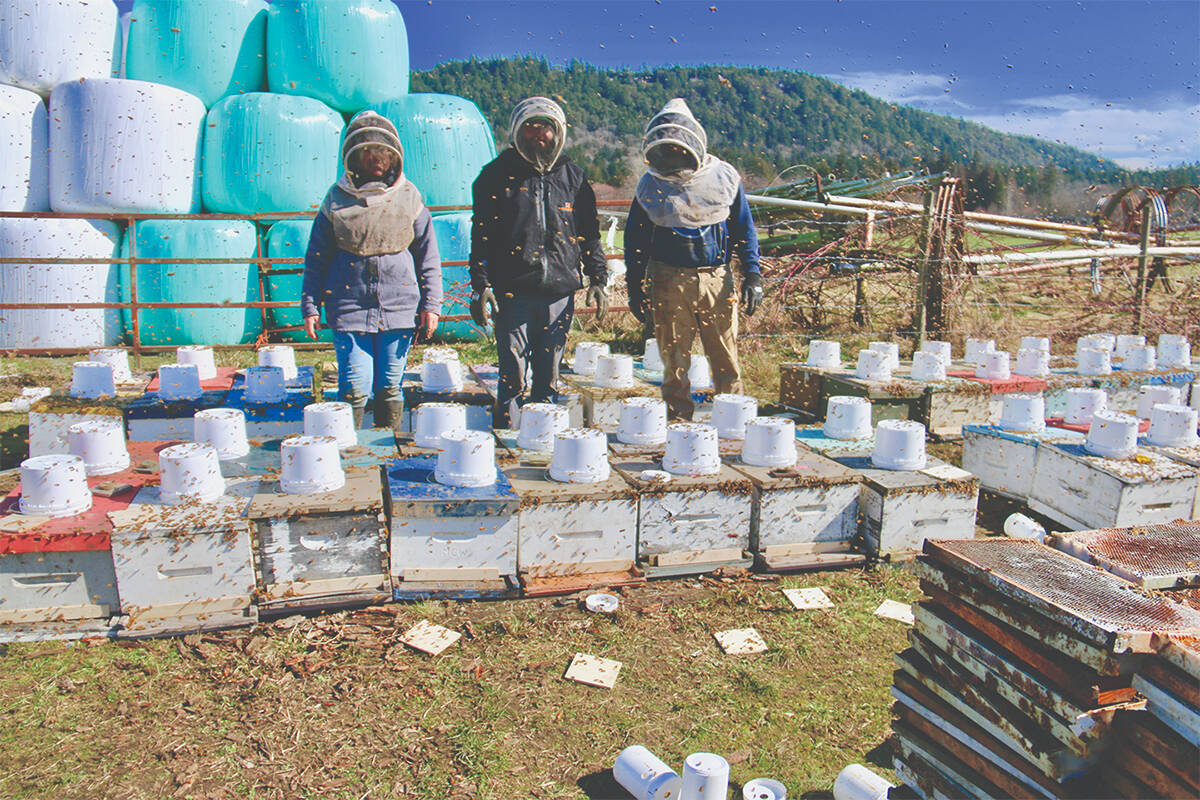BY DUCK PATERSON
Three and a half million honey bees are spending the end of winter on Vancouver Island while waiting for the weather to warm up on the Prairies.
The bees just arrived from New Zealand, and Renato Gallego, along with his team from Nanaimo and Saskatchewan, were helping the bees into their new hive homes March 8 on a farm on Code Road in Ladysmith.
Gallego said the bees were brought to the Island first so that they could get an early start on establishing their new homes before they get moved to Saskatchewan.
The bees arrived in frames weighing two kilograms each, with approximately 10,000 worker bees and one queen bee which will be the boss of every hive. The new arrivals are replacement stock for bees lost over the winter in the hives in Saskatchewan due to cold and disease.
“Almost half of the hives were lost, so we needed replacements,” Gallego said. “It’s still winter here but down south it’s late summer so the bees are mature and can be transported.”
The bees that survived the winter are still in hibernation but by mid May, when it’s warmer on the Prairies, the new batch will be transported to join the others and then released in the fields of canola and other plants that they gather nectar from.
While in their new homes, the bees will be fed a syrup consisting of 50 per cent sugar until the weather warms up. The syrup is delivered through special pails or trays placed on top of the hives. It is easier for bees to digest “honey” made from sugar syrup than from nectar in cold temperatures. When beekeepers collect honey from the hives in mid to late summer, they leave enough honey for the bees to eat during the fall.
Gallego said the bees left New Zealand three days before they were put into new hives in Ladysmith.
“They are transported on commercial planes and the heat generated by so many bees causes the plane to use their air conditioning, so they have to give passengers blankets,” he said. “When the plane landed in Vancouver the bees were loaded onto our truck and then headed off to get on the ferry to the Island. [Today] we are putting the little fellas into their new homes.”
The nectar collected by the bees contains about 70 per cent water. The bees remove the moisture from the nectar by rapidly flapping their wings over the cells in the frames which moves fresh air into the hive and the moist air out. At the end of the process, honey contains approximately 17 per cent water.
Each hive holds 10 frames which is where the bees deposit the honey. When the new bees are transplanted into their new hives, five of the frames are removed so the travelling frame, containing the queen and 10,000 new bees is placed in the hive.
“In a week we will come back and remove the empty travelling frames, as all the bees will have moved into the balance of the hive. We then put back in the five that were removed and the bees now have the full 10 frames in which to deposit their honey,” Gallego said.
READ ALSO: Student club in Nanaimo buzzing about bees
According to the Canadian Honey Council it requires 556 worker bees to gather a pound of honey. The average life of a worker bee is about six weeks in honey season and six months out of season. Once the bees are in Saskatchewan, each hive will produce approximately 100 pounds (45 kilograms) of honey over the season.
Bonnie McNab from Ladysmith was helping to load the new hives last week, and though she was covered in a screened hood and shoulder and arm protection, she had still been stung.
“Probably 15 times this morning, so far,” she said. “You get kind of acclimatized. Every season, once you’ve had six or seven stings, then your body builds up its own defence and you don’t get the swelling, itching and that stuff. It still hurts, but that goes away soon.”
READ ALSO: VIU students in Nanaimo have been busy creating haven for bees
editor@nanaimobulletin.com
Like us on Facebook and follow us on Twitter


